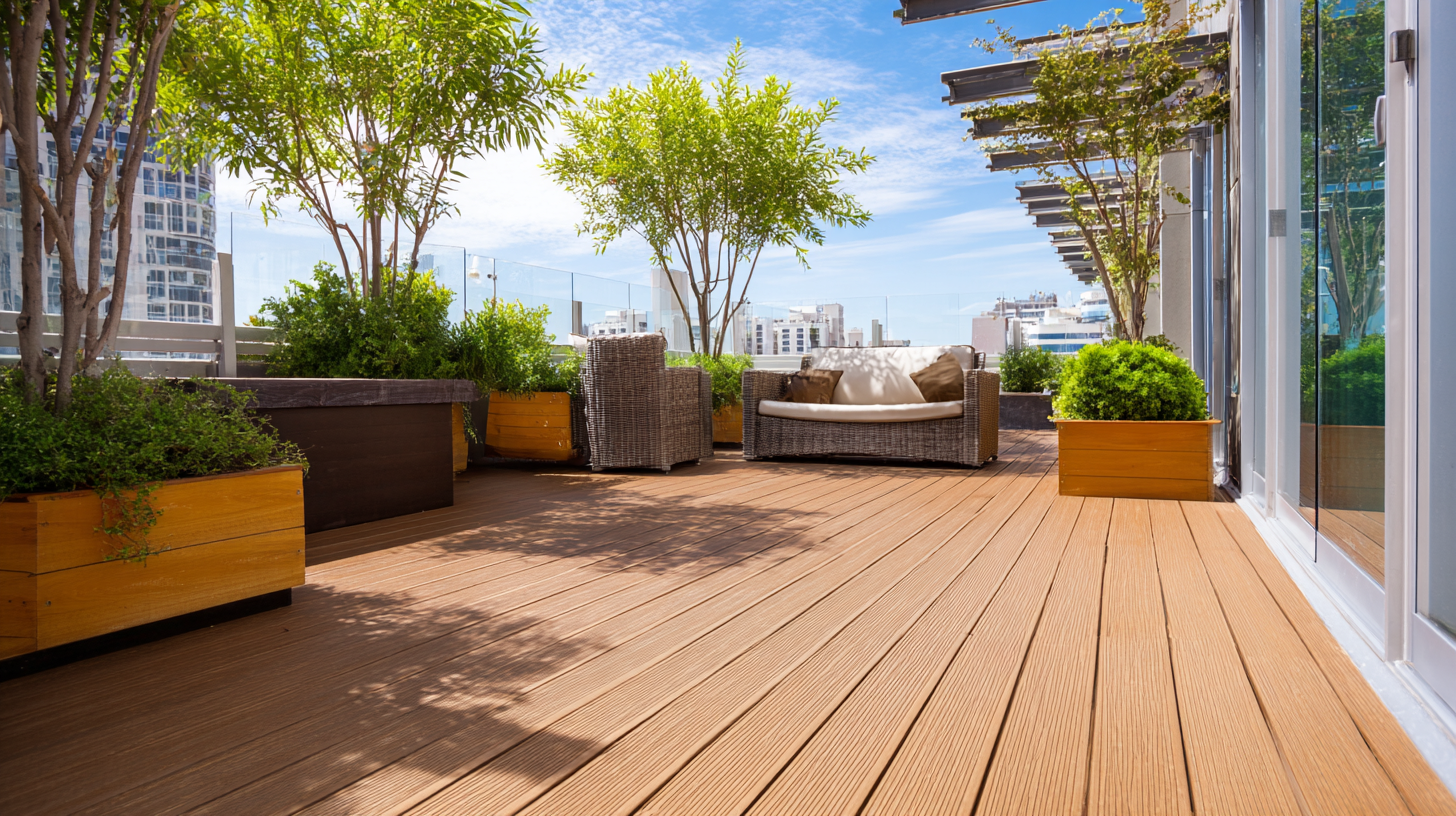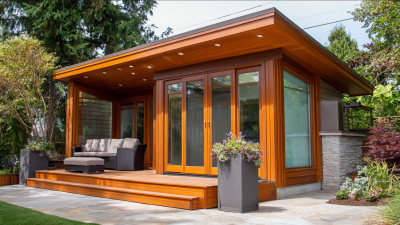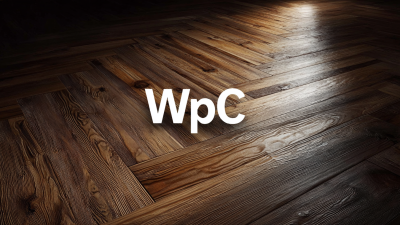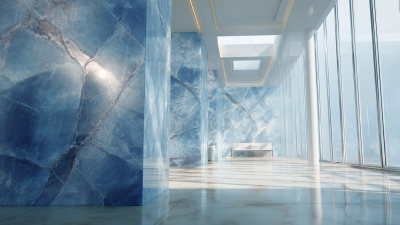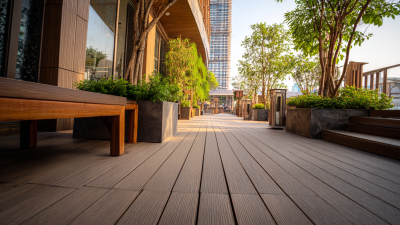Shandong Xiangying New Materials Technology Co., Ltd.
Shandong Xiangying New Materials Technology Co., Ltd.
WPC cladding, a composite material made from wood fibers and plastic, has revolutionized outdoor space design, marrying functionality with aesthetic appeal. According to a report by MarketsandMarkets, the global WPC market is projected to reach $9.5 billion by 2025, reflecting the increasing preference for sustainable and durable building materials. The unique properties of WPC cladding, such as resistance to moisture, insects, and fading, make it an ideal choice for various exterior applications, ranging from decks to wall coverings. As homeowners and designers look to enhance outdoor spaces, WPC cladding offers a practical solution that aligns with modern sustainability goals, allowing for creative freedom while ensuring long-lasting performance. This guide explores how WPC cladding can transform your outdoor environments, providing the perfect blend of style and resilience.
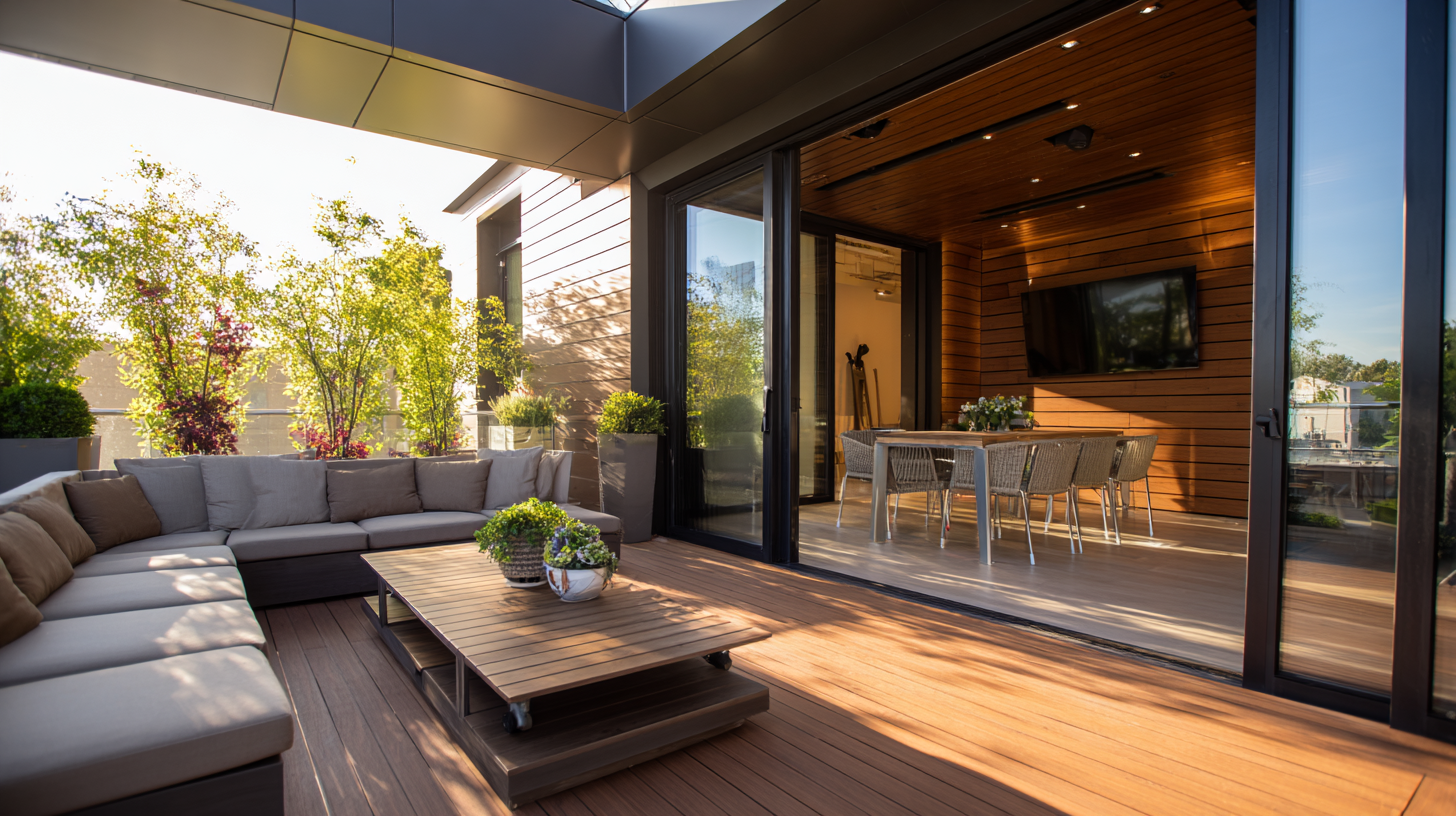
Wood-Plastic Composite (WPC) technology combines the best features of wood and plastic, resulting in a versatile material that has gained significant popularity in the construction and design industries. WPC cladding consists of a mix of wood fibers and recycled plastic, enhancing durability while providing an aesthetic appeal akin to natural wood. According to a report by Technavio, the global WPC market is expected to grow by over $3 billion between 2021 and 2025, highlighting the increasing demand for sustainable and maintenance-free building materials.
One of the key benefits of WPC cladding is its resistance to environmental factors. Unlike traditional wood products, it does not warp or splinter and is impervious to moisture, making it suitable for various outdoor applications including decking, siding, and fencing. A study from the Freedonia Group indicates that the demand for WPC in outdoor applications is predicted to rise at a CAGR of 9.8% through 2025, driven by a shift towards eco-friendly materials that reduce the carbon footprint. This growth shows a clear trend towards using WPC cladding to enhance outdoor spaces with both functionality and design elegance.
| Property | Description |
|---|---|
| Material Composition | Wood-plastic composite (WPC) is made from a combination of wood fibers and plastic polymers. |
| Durability | WPC cladding is resistant to rot, decay, and insect damage, ensuring a long lifespan. |
| Maintenance | Requires minimal maintenance, typically only needing occasional cleaning with soap and water. |
| Environmental Impact | Many WPC products are made from recycled materials, making them an eco-friendly choice. |
| Aesthetic Variety | Available in a wide range of colors and finishes to suit various design preferences. |
| Installation | Can be installed using standard tools, and often features interlocking systems for easy assembly. |
| Cost-Effectiveness | Although the initial investment may be higher, the long-term savings due to low maintenance make it cost-effective. |
WPC (Wood Plastic Composite) cladding is rapidly gaining popularity in outdoor design due to its impressive durability and weather resistance. According to a report by the Institute for Advanced Composite Manufacturing Innovation, WPC materials can last up to 25 years with minimal maintenance, making them a cost-effective choice for homeowners and architects alike. Unlike traditional wood, which often warps, splinters, or fades under the sun, WPC cladding combines wood fibers with plastic to create a robust material that withstands the elements.
One of the key benefits of WPC cladding is its ability to resist moisture, mold, and pests. A study published in the Journal of Construction and Building Materials noted that WPC cladding can reduce water absorption by up to 90% compared to natural wood. This attribute not only prolongs the lifespan of the material but also enhances the aesthetic appeal of outdoor spaces, keeping them looking fresh and new for years.
**Tips:** When choosing WPC cladding, consider the manufacturer's warranty and look for products with a high recycled content, as they tend to perform better and are more environmentally friendly. Additionally, opting for a textured finish can lend a more natural look while improving slip resistance, vital for safety in outdoor areas.
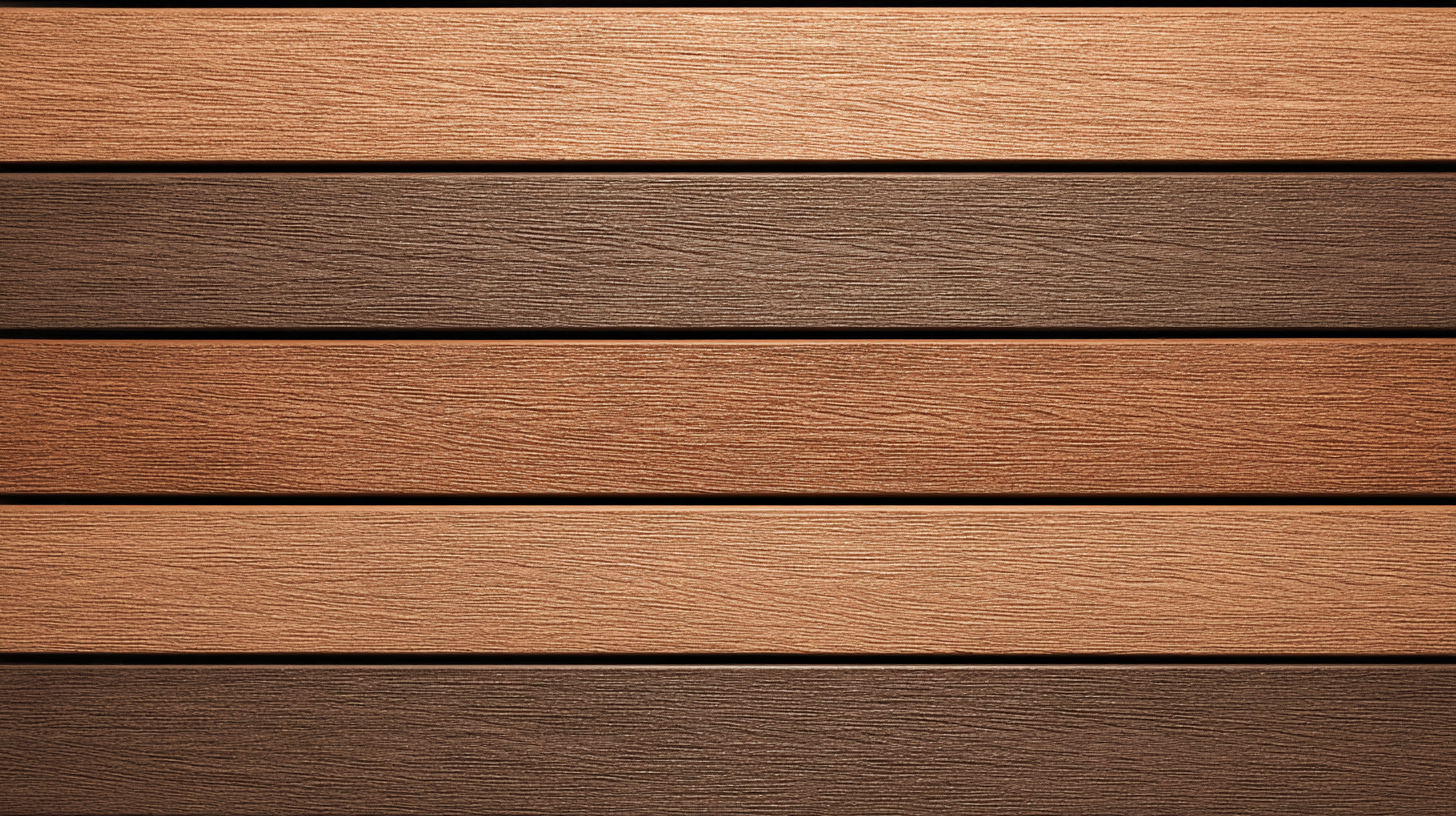
WPC (Wood-Plastic Composite) cladding presents a more sustainable alternative to traditional materials like wood and vinyl. Made from a blend of recycled wood fibers and plastic, WPC cladding reduces the demand for virgin timber, thereby lessening deforestation and habitat destruction. By utilizing waste products, it effectively decreases landfill waste and provides an efficient use of resources. This recycled nature not only contributes to environmental conservation but also promotes a circular economy approach within the construction and landscaping industries.
Moreover, WPC cladding is designed to be long-lasting and low-maintenance, further enhancing its appeal from a sustainability standpoint. Unlike traditional wooden cladding, which often requires regular treatment and replacement due to rot and insect damage, WPC remains durable and weather-resistant without the need for harmful chemical preservatives. This longevity translates into a reduced carbon footprint over the lifecycle of the product, as fewer replacements mean lower resource consumption and waste production. Consequently, opting for WPC cladding not only enhances outdoor spaces aesthetically but also aligns with growing sustainability goals.
WPC (Wood-Plastic Composite) cladding is an increasingly popular choice for enhancing outdoor spaces, not just for its aesthetic appeal but also for its cost-effectiveness. When considering the long-term financial implications of home improvement, WPC cladding stands out due to its durability and low maintenance requirements. Unlike traditional wood, which can warp, splinter, or require regular staining and sealing, WPC cladding is engineered to withstand the elements, making it a more reliable option for homeowners looking to minimize ongoing upkeep costs.
The initial investment in WPC cladding can be higher than that of natural wood, but this is quickly offset by the savings in maintenance and replacement. Homeowners are spared from constant repairs and the additional labor and materials associated with traditional wood. Furthermore, WPC's resistance to decay and pest damage means that it won't need to be replaced as frequently, leading to significant savings over time. As such, WPC cladding not only enhances the beauty of outdoor spaces but also represents a smart, long-term investment for budget-conscious homeowners.
This chart illustrates the cost-effectiveness of WPC cladding compared to traditional cladding materials. It highlights the initial costs, yearly maintenance costs, and the lifespan of both materials, showcasing long-term savings associated with WPC cladding.
Wood-Plastic Composite (WPC) cladding has emerged as a popular choice for enhancing outdoor spaces, offering aesthetic versatility that aligns perfectly with modern design trends. According to a report by Grand View Research, the global WPC market is expected to reach USD 5.89 billion by 2027, growing at a compound annual growth rate (CAGR) of 10.6%. This indicates a strong interest in WPC materials, particularly in residential and commercial applications where design flexibility is crucial.
The beauty of WPC cladding lies in its ability to mimic natural wood while providing durability and resistance to harsh outdoor conditions. Designers are incorporating a wide array of styles, colors, and textures, allowing for limitless customization options. Recent trends highlight the growing demand for materials that combine eco-friendliness with aesthetic appeal, as consumers increasingly seek sustainable solutions. A survey by the American Institute of Architects indicated that 70% of architects are specifying WPC in their projects to meet environmental standards without compromising on style, reinforcing its role as a forward-thinking choice for outdoor enhancements.
